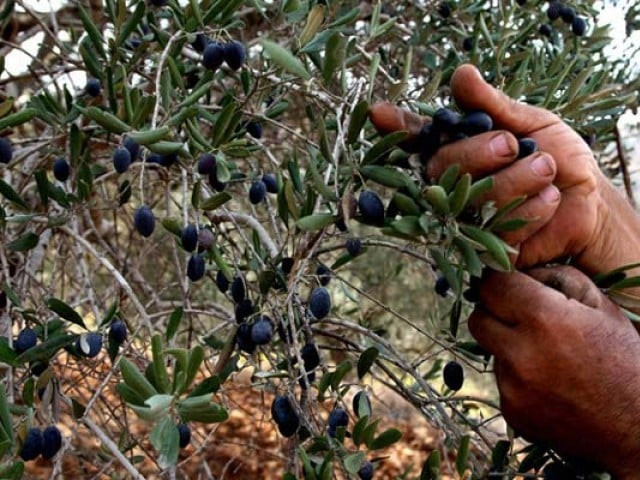Reducing imports: Punjab aims to grow its own olives
Olive trees can be cultivated along with routine crops as well

In addition, scientists in Punjab have collected around 52 olive genes that cover the entire range available in the world, including ones from Spain, Italy, Turkey, Tunisia, Palestine, Syria and Jordan. PHOTO: AFP
On Wednesday, agriculture officials said Sialkot, Narowal, Gujrat, Jhelum, Rawalpindi, Attock, Chakwal and Khushab districts have been identified as potentially ideal areas for olive cultivation.
They said olive cultivation in these potential areas could produce huge quantity of olive oil, which might bring Pakistan’s olive oil import share to zero.
The environment, minimum and maximum temperatures, soil types, average rainfall and other related growth factors in the identified districts were optimum for olive cultivation.
The officials pointed out marginal lands could be utilised for olive cultivation without replacing other crops and it would also help in reducing the import of olive oil.
The agriculture department has been organising awareness and training programmes to educate farmers on olive cultivation techniques and producing value-added products.
The overall demand of olive oil is over 1.9 million tonnes of which 1.3 million tonne is imported from various countries for catering to domestic requirements, costing billions of rupees every year.
Facts and figures
In 2012 also, the Punjab government initiated a campaign to plant olives in the province as part of the 300-million-dollar project ‘Promotion of Olive Cultivation for Economic Development and Poverty Alleviation’.
Financed by Italy, the project aimed to help Punjab, Khyber-Pakhtunkhwa, FATA and Balochistan grow olive plants.
Agriculture scientists have identified areas for olive growing in Sialkot, Narowal, Gujrat, Jehlum, Chakwal, Attock, Khushab, Faisalabad, Kasur, Rawalpindi and Islamabad. The spread of the cities shows that entire central and upper Punjab is suitable for olive production.
Though the soil type, range of temperatures and amount of rainfall suits olive production in Pakistan, policymakers did not make any move earlier to capitalise on the potential, despite the edible oil import bill swelling by the year and hitting 2.6 billion dollars in 2011.
In addition, scientists in Punjab have collected around 52 olive genes that cover the entire range available in the world, including ones from Spain, Italy, Turkey, Tunisia, Palestine, Syria and Jordan.
They have also identified suitable ecological zones for each variety and have got two of them formally approved from the Federal Seed Certifications.
In the past few months, 25 nursery owners have been trained for production of olive plants.
Published in The Express Tribune, September 29th, 2016.



















COMMENTS
Comments are moderated and generally will be posted if they are on-topic and not abusive.
For more information, please see our Comments FAQ